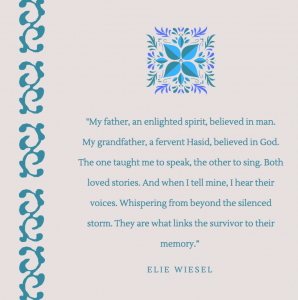
“Now I am made one with You and from that Union my heart is consumed with rapture and my tongue is bewildered. By union, I have been merged in the Unity, I am become altogether apart from all else. I am You and You are I – nay, not I, all is altogether You. I have passed away, ‘I’ and ‘You’ no more exist. We have become one and I have become altogether You” -Farid ud-Din Attar
In this blog post, I have chosen to combine drawing and graphic design to produce this image of 7 birds, all containing a different word for God in 7 distinct languages: Greek, Russian, Arabic, Chinese, Yiddish, Urdu and Hebrew. This idea was inspired by week ten’s reading of Conference of the Birds. The journey taken by the birds in Attar’s celebrated poem leads them through seven valleys that each carve out a different moral lesson. In the valley of search, the birds undergo a hundred different trials, ultimately learning that they mustn’t always take the path laid before them, but rather, must seek their own path through patience and determination. Then follow the valleys of love, knowledge, unity, poverty and nothingness.
Following all of these trials, only thirty of the thousand birds remain. It is only after they have cleansed their spirits and endured these hardships that they are able to arrive at enlightenment. Having passed all of the tests that the valleys presented them with, the birds finally reach “The Simurgh” who they had been traveling so long to find, only to discover that the Simurgh is them. They had reached the state of enlightenment and realized that God was within them, and they were God altogether. This unity of things is what The Conference of the Birds essentially teaches.
I chose to depict seven different birds to symbolize the seven different valleys that the characters had to brave before reaching their destination. I also wanted to include different writings of the word “God” to symbolize the universality of this message and the diversity of communities that are united through this theme. Finally, I added a layer of water onto the drawing, just to artistically depict the final scene where the birds recognize their reflections in the water.
I found this theme fascinating, because so many times, people exhaust their energy trying to find another person or religion or philosophy to give them the answers to life. Instead of paying money to have your palms read or investing hours into reading self-help articles, sometimes, the key lies in clearing your mind, cleansing your spirit, and just looking within yourself to find those answers.

Recent Comments